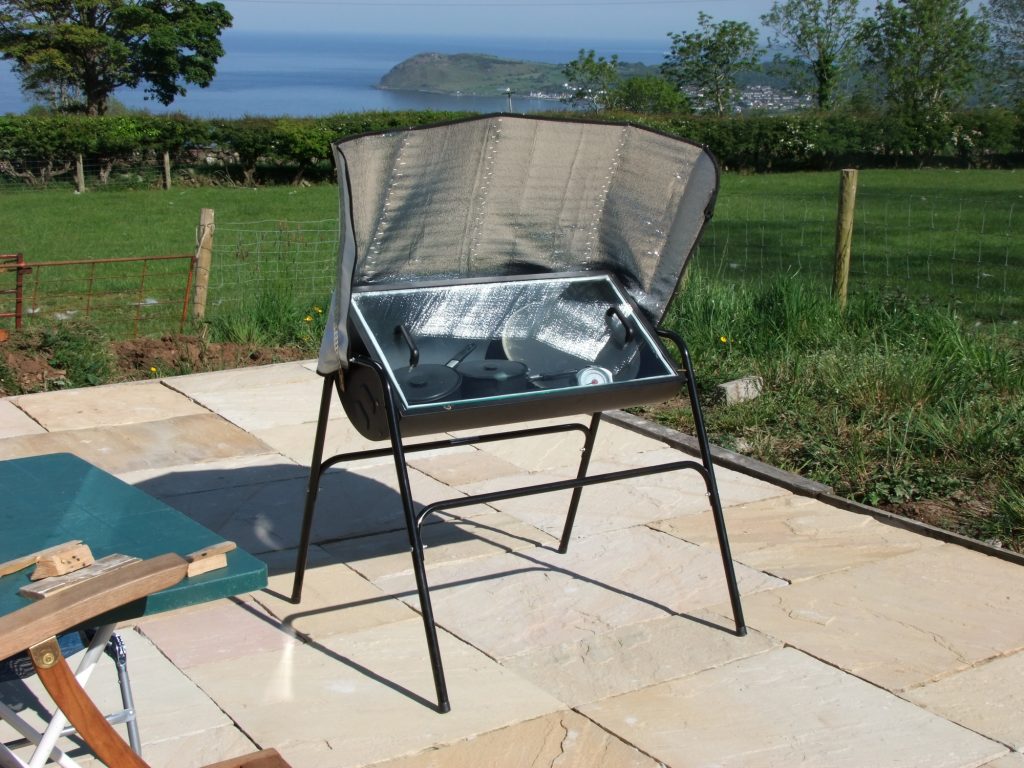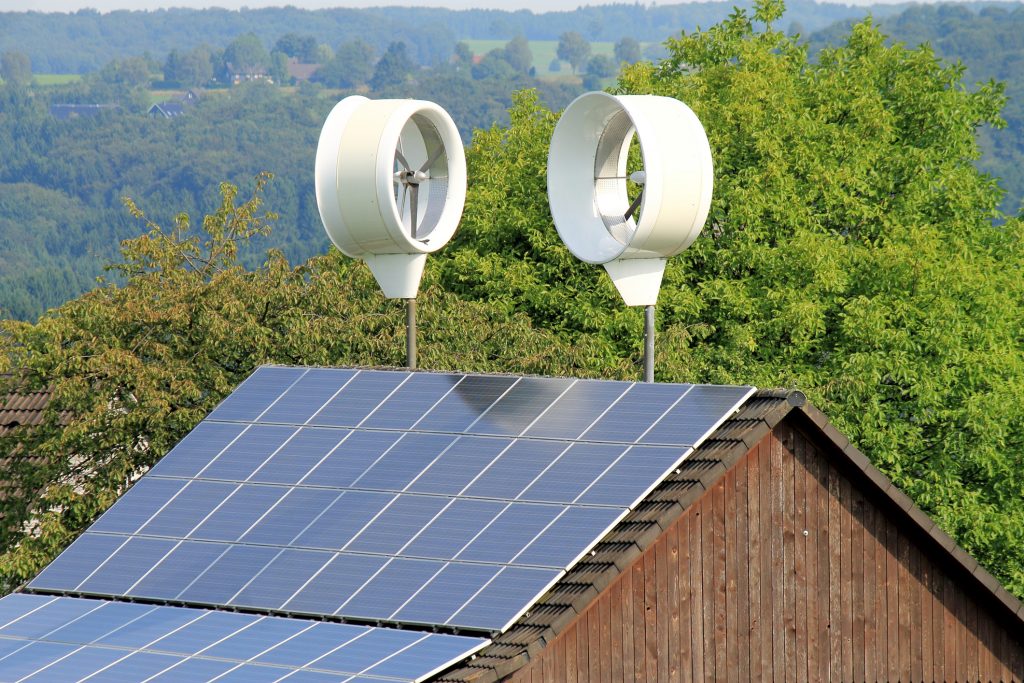Greening our economy and way of life is a growing priority for many around the country. For some of us, one of the most effective things we can do is change how we get our energy. There are many ways to switch to renewable energy sources ; some of us have the option of changing the type of energy we receive from energy providers. But instead of outsourcing for a green energy provider, it can be even more satisfying and impactful to produce that energy ourselves and become our renewable energy sources.
As technology develops, there are more and more ways for residents and small businesses to install a renewable energy sources. The upfront and long-term costs for various options depend on building specifications, location, energy needs, and other factors. Additionally, government assistance and policies supporting renewable installations vary based on location. Home and business owners across the US can take advantage of a federal tax credit for renewables (26% in 2020). It’s also important to check out what incentives are available in each state in order to determine the best option.
Below are eight possibilities for on-site business or green home energy installations. We rank these options based on overall feasibility and potential affordability. We start the list with those most likely to be affordable and accessible for a typical home or business, and end with those that are likely to have higher upfront costs and/or more specific building or location requirements. Solar PV Panels
1: Solar PV panels
Perhaps the most well-known form of renewables are photovoltaic (PV) solar systems, which turn sunlight into electricity. The ability and/or cost-effectiveness of solar installation depends on a number of factors. A big one is whether there is enough space for them on a roof (or on land). You must consider roof size and condition for feasibility purposes. The amount of sunlight that shines on an area determines if the energy generation is worth the cost of installation.
If conditions do allow for solar installation, many may fear the perceived upfront costs of installing them. Solar energy prices can be high, as installing a system that you then own can cost several thousand dollars before incentives. Anyone can benefit from the federal tax credit, which puts a dent in that cost along with potential local incentives. But installing solar panels doesn’t necessarily mean buying them, as there are other alternatives that, for many, will eliminate upfront costs altogether.
A Power Purchase Agreement (PPA), for example, allows you to have solar installed at no cost, while all you pay for is the renewable energy they produce (usually at a low rate through a multiyear contract with the installer). Another common option is a solar lease, in which there is little to no upfront cost but instead regular ongoing payments before outright ownership. These options make solar panel installation affordable for those who don’t have the money needed for a big purchase.
2: Solar Cookers
For those looking to cook outdoors on a hot sunny day, a solar cooker can do the trick. Just like PV panels, a solar cooker uses energy from the sun. This makes use of the suns heat directly rather than the energy radiated from the sun. On a hot day, these gadgets can stand in for your gas/electric oven or grill, reaching up to 400⁰ F. And as long as the sun is out, many can even get cooking on colder days. The outside of a solar cooker can be positioned to where it will most directly absorb the sun’s heat rays. It traps heat inside so it’s hot enough to cook almost any meal you could in a normal oven.
A product like this is not eligible for the federal renewable tax credit, and a solar cooker should not necessarily completely replace a high-powered indoor appliance, but it is still a cheap and effective way to go green for any backyard dinners or camping trips. Various versions of solar cookers exist, with top models going for a couple hundred dollars, and there are even DIY possibilities!

3: Solar Water Heating
As with solar cookers, solar water heaters use nothing but the sun’s heat for a specific household need. There are two types of solar water heating systems: passive and active. Direct sun rays heat a tank of water which then is mixed into hot water storage to complete a passive system. Active systems, on the other hand, use pumps instead of gravity to transfer water from your storage, through the solar heat collector, and back into the building.
Most solar water heater installations will cost a few thousand dollars before tax credits and other incentives. For those with enough know-how, there are also DIY options to bring the cost down further. Whichever version works for your home or business, this green heating of your water is an effective and direct way to take advantage of the sun’s energy, using the sun’s heat itself rather than converting it into electricity.
4: Solar Air Conditioning
On a hot summer day, it can be a huge relief to get out of the heat and into a nice, cool space. Those summer days also, of course, provide a lot of sunshine, so why not use the sun’s energy to get cool? Solar air conditioning systems allow for just that. There are two types of solar AC: hybrid and chiller systems. Hybrids use both PV and direct current (DC), with batteries that charge with the sun to allow the system to run on backup power at night. Chillers use solar energy to power fans and motors to blow air over water-saturated materials.
The upfront costs of buying and installing such an AC are likely to be higher than a conventional version, likely in the thousands of dollars before government incentives; like with other renewable-run technologies, the system will pay for itself over time. But with conventional air conditioning systems making up about 5% of electricity usage in the US, using solar for just that part of your home or business’s energy footprint can make a significant difference for both the environment and your long term finances.
5: Small Wind Turbines
Wind energy is another growing renewable energy source around the world, and it also has potential for smaller scale power production for an individual property. Just like solar panels, figuring out whether wind turbines can be feasible and productive enough will depend on a number of factors. In this case, there are two main physical requirements: enough space, and enough wind. Just like some other forms of renewable energy, the upfront costs are based on scale. Larger projects will cost between $15,000 and $75,000 before incentives (including the federal tax credit), with larger rewards of up to 5 to 15 kW.
However, there are even smaller wind turbines that can be used to make a dent in your energy usage or work as a backup generator, while costing you only hundreds of dollars rather than several thousand. These sensible, micro energy producers can be a fun and effective way to produce energy from your own environment while offsetting a portion of your costs.

6: Microhydropower
Hydropower has been around for centuries, and today hydroelectricity makes up a majority of the world’s renewable energy production. Massive hydroelectric dams are the most common method for this type of electricity generation, so naturally this type of renewable energy is not the first thing most think of when considering installing renewable energy at their home or business. However, for those with properties in the right location, there is indeed a way with microhydropower. As the name suggests, microhydropower is a small scale version of hydroelectric production that can be used on properties with naturally running water. The running water is converted to rotational energy using a water turbine, pump, or waterwheel, and then converted into electricity.
These systems have a much lower ecological effect than large scale hydropower. The price will depend on the scale, going anywhere from $1,000 to $20,000 (while unfortunately not eligible for the federal tax credit), but they are considered to be quite cost-effective with major payback. As having running water on the property is a prerequisite, this type of renewable power production is rather niche and more likely to be accessible for farms, ranches, and rural homeowners. But even a small stream will do for a simple, low-cost solution!
7: Geothermal Heat Pumps
The US is the world’s leader in geothermal production, but it is not commonly thought of as a form of on-site renewable energy sources for a home or business. Since geothermal production is energy converted from the earth’s internal heat, this form of renewable energy can be used directly for building climate control. A geothermal heat pump uses an underground loop to move heat from the earth directly into your home. In the summer, it does the opposite, removing the heat in your home and moving it underground. Despite the name, a geothermal heat pump can provide both green heating and cooling for a home or business.
Using the earth’s own renewable, green heat is a very innovative way to minimize long term HVAC costs, but it will be a case by case basis as to whether the benefits outweigh the costs for such a system. The upfront costs of these systems are indeed rather high: $10,000 to $30,000 before incentives (including the federal tax credit), depending on a number of factors. The benefits are seen in the resultant savings: a 25 to 50% decrease in heating and cooling. So this is another case where one definitely must do the math to determine its affordability.
8: Solar Shingles
For some home or business owners, one drawback of standard PV solar panels is their perceived poor aesthetics. Solar shingles might be the alternative for you if you are not a fan of typical PVs. Whereas a standard roof PV system has raised panels installed on top of an existing roof, this option uses a number of smaller panels that effectively look and act like normal roof shingles while also producing energy.
While solar shingles qualify for most of the government incentives that exist for solar panel installation, the overall cost is significantly higher than standard PV since you are essentially installing an entirely new roof that happens to be made from solar technology. The cost can, therefore, be $50,000 or more. Solar shingles may only be an affordable option specifically for those who are already looking to install a new roof. In some cases, installing a solar shingle roof can be cheaper than installing both a new roof and solar panels. But this largely depends on one’s specific situation.
Find Out What Works for You
For those wishing for green home energy , third party renewable energy sources don’t have to be your only option. The possibilities vary widely by location and building, so it is of course important to do your research. Installing solar panels is the most commonly known option. We hope this list shows that there are other possibilities to become your own green energy supplier. Renewable energy sources at your home or business can be a realistic, affordable possibility for many!
